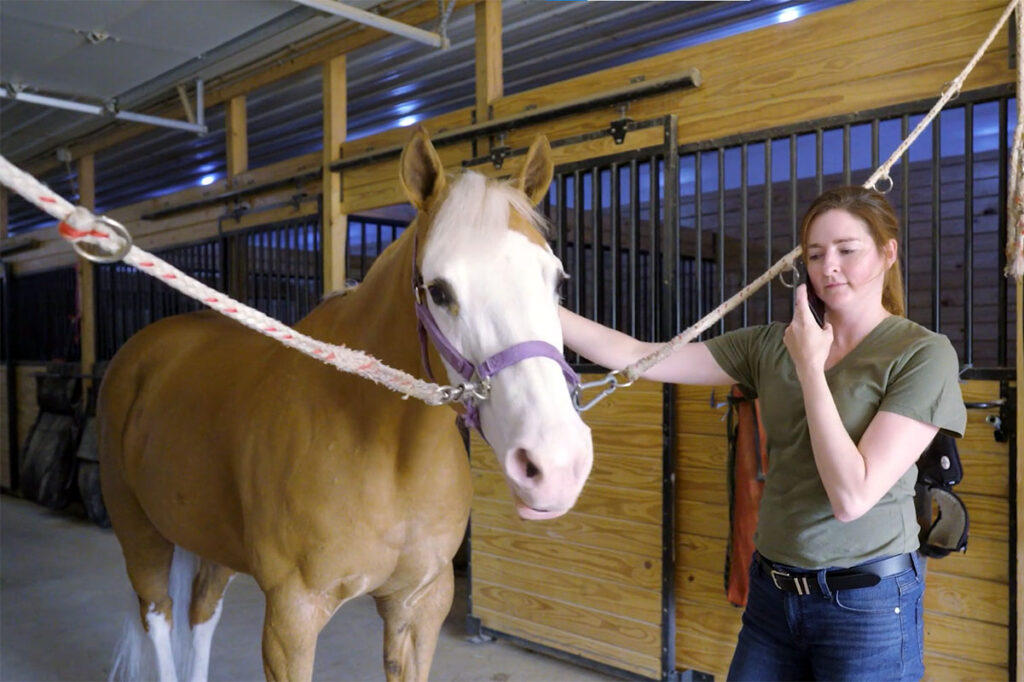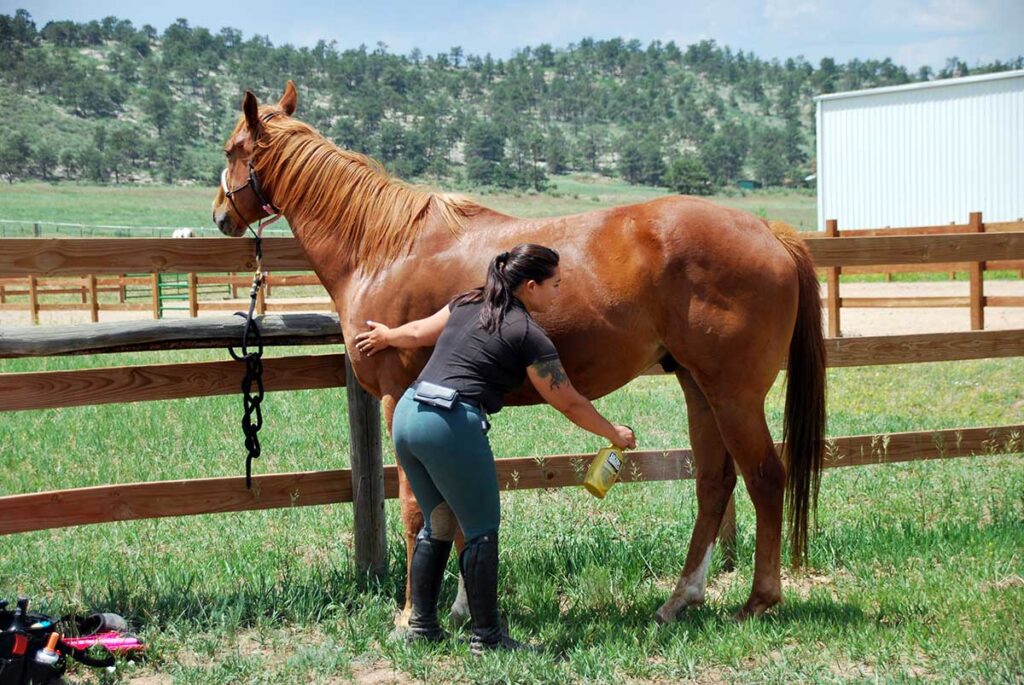Walk down the aisle of a big barn and you might see some horses behaving oddly. One horse hangs his head over the stall door and sways his front end rhythmically from side to side. Nearby, another horse paces a fixed route around his stall. These two behaviors—pacing and weaving in horses—can be both annoying and detrimental to equine welfare.
What is weaving (or pacing)?
In both these examples, the horses are performing what we call stereotypic behaviors. These are repetitive, unvarying behaviors that seem to serve no purpose or have no goal. Weaving and pacing (also called stall-walking) are considered locomotory (movement) stereotypies. Other stereotypies in horses include oral variants, such as cribbing, wind-sucking, lip-smacking, and tongue lolling.
Why do horses weave or pace?
Stereotypies are often called vices, placing blame on the individual horse. However, it’s important to understand that stereotypic behaviors do not manifest in horses living under natural conditions. Stereotypies like weaving in horses have been called “a disease of domestication.” They result only when humans confine and manage horses.
In barns, horses sometimes weave and stall-walk in anticipation of a highly arousing event, such as feeding time or when other horses are turned out or brought in. In paddocks or pastures, these two behaviors are more likely to occur only when a barrier thwarts the horse’s ability to move freely and possibly gain desired things such as access to other horses.
Health impacts of pacing or weaving in horses
Any repetitive behavior can take a toll on the horse’s body. Both weaving and pacing can cause issues such as uneven hoof wear, strain or stress on the horse’s musculoskeletal system, and abnormal muscular development or atrophy (muscle wasting). Horses that weave or pace are also experiencing higher levels of stress. The behavior only arises when the horse feels frustration or other negative emotions as a result of their living conditions. Chronic stress is a serious physical and mental health issue, and it affects the horse’s welfare as well.
How do people try to address the issue?
Anti-weave bars, which only allow a horse to stick his head and neck out of the stall through a thin opening, are common stall-fronts in barns. Less expensive DIY alternatives might include hanging water-filled jugs from the stall ceiling, directly in the horse’s path of weaving or pacing. However, both attempts to address the issue can’t get to the heart of why the horse is behaving this way (e.g., frustration, stress, anxiety). They might cause the horse to simply change the location in which he performs the behavior.
What can you do to stop horses from weaving or pacing?
As always, the key goal when considering how to solve an issue is addressing the underlying cause of the unwanted behavior. When the behaviors occur because of a desire to be near or with other horses, increasing social contact and turnout time can help reduce or stop them. When predictable, routine events such as feeding or turnout trigger weaving in horses, changing how the routine occurs (e.g., feeding the weaving horse first, turning horses out in a different order) can help address the issue. Because horses perform these behaviors when stressed, try to reduce stress to minimize how often these types of behaviors occur.
Finally, when given the opportunity, all animals will naturally allocate time throughout the day to meet their basic needs. A horse’s basic needs include social engagement with other horses, ad-lib access to forage, and the freedom to move their bodies and engage in a wide range of normal behaviors. By allowing horses to behave like horses, we greatly decrease the likelihood they will fall victim to developing “diseases of domestication” commonly seen in managed horses.
Related Reading:
- How to Find Help if Your Horse Is Misbehaving
- Boredom Busters: Stall Toys for Happy Horses
- From Body Language to Behavior: How Horses Communicate
Lauren Fraser, MSc, FFCP, has helped people understand horse behavior problems since 2006. With a background working as a horse trainer, an MSc in clinical animal behavior, and more than a decade working as an equine behavior consultant, Lauren’s approach gets to the heart of why horses behave the way they do and addresses issues using low-stress methods. Lauren also guest lectures at universities, presents at conferences, and creates educational programs for horse owners and equine professionals.
Are you enjoying this content? Sign up for My New Horse’s FREE newsletter to get the latest horse owner info and fun facts delivered straight to your inbox!








